
Christian Daniel Rauch was a German sculptor. He founded the Berlin school of sculpture, and was the foremost German sculptor of the 19th century.

Herrenchiemsee is a complex of royal buildings on Herreninsel, the largest island in the Chiemsee lake, in southern Bavaria, Germany. Together with the neighbouring isle of Frauenchiemsee and the uninhabited Krautinsel, it forms the municipality of Chiemsee, located about 60 kilometres (37 mi) southeast of Munich.
Events from the year 1868 in art.

Bavaria is the name given to a monumental, bronze sand-cast 19th-century statue in Munich, southern Germany. It is a female personification of the Bavarian homeland, and by extension its strength and glory.
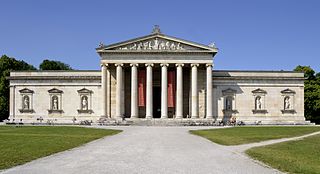
The Glyptothek is a museum in Munich, Germany, which was commissioned by the Bavarian King Ludwig I to house his collection of Greek and Roman sculptures. It was designed by Leo von Klenze in the neoclassical style, and built from 1816 to 1830. Today the museum is a part of the Kunstareal.

Linderhof Palace is a Schloss in Germany, in southwest Bavaria near the village of Ettal. It is the smallest of the three palaces built by King Ludwig II of Bavaria and the only one which he lived to see completed.
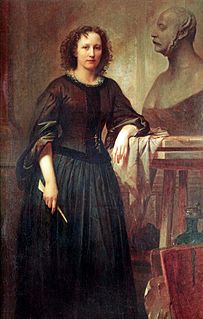
Franzisca Bernadina Wilhelmina Elisabeth Ney was a celebrated German-American sculptor who spent the first half of her life and career in Europe, producing portraits of famous leaders such as Otto von Bismarck, Giuseppe Garibaldi and King George V of Hanover. At age 39, she immigrated to Texas with her husband, Edmund Montgomery, and became a pioneer in the development of art there. Among her most famous works during her Texas period were life-size marble figures of Sam Houston and Stephen F. Austin, commissions for the Texas State Capitol. A large group of her works are housed in the Elisabet Ney Museum, located in her home and studio in Austin. Other works can be found in the US Capitol, the Smithsonian American Art Museum, and numerous collections in Germany.

Ludwig is a 1973 biographical film directed by Italian director Luchino Visconti about the life and death of King Ludwig II of Bavaria. Helmut Berger stars as Ludwig, Romy Schneider reprises her role as Empress Elisabeth of Austria.
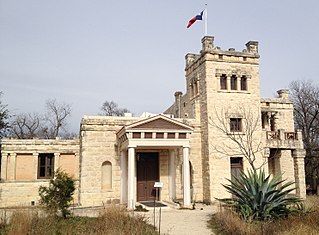
The Elisabet Ney Museum is a museum located in Austin, Texas, United States. It is housed in the former studio of sculptor Elisabet Ney and is dedicated to showcasing her life and works. There is a permanent collection of her portrait busts and personal memorabilia on display.

Prince Ludwig Ferdinand of Bavaria, was a member of the Bavarian Royal House of Wittelsbach and a General of Cavalry. Following his marriage to Infanta María de la Paz of Spain, he also became Spanish infante.

Ludwig II was King of Bavaria from 1864 until his death in 1886. He is sometimes called the Swan King or der Märchenkönig. He also held the titles of Count Palatine of the Rhine, Duke of Bavaria, Duke of Franconia, and Duke in Swabia.
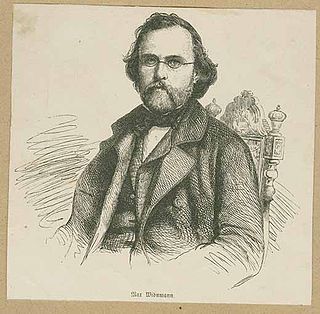
Max von Widnmann was a German sculptor and professor at the Academy of Fine Arts in Munich. Many of his works were commissioned by King Ludwig I of Bavaria.

Stephen F. Austin is a statue of Stephen F. Austin by Elisabet Ney, originally modeled in 1893 and installed in 1905, which is part of the National Statuary Hall Collection in the United States Capitol in Washington, D.C., as one of the two statues from Texas; the other Texas statue, Sam Houston, is also by Ney and was produced in parallel. Another carving of Stephen F. Austin is displayed in the Texas State Capitol, where it was installed in 1903.
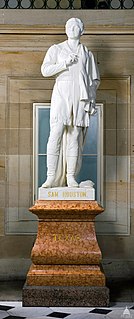
Sam Houston is a statue of Sam Houston by Elisabet Ney, originally modeled in 1892 and installed in 1905, which is part of the National Statuary Hall Collection in the United States Capitol in Washington, D.C., as one of the two statues from Texas; the other Texas statue, Stephen F. Austin, is also by Ney and was produced in parallel. Another carving of Sam Houston is displayed in the Texas State Capitol, where it was installed in 1903.

Lady Macbeth is a statue of the Shakespearean character Lady Macbeth by German American sculptor Elisabet Ney. The sculpture is a life-size full-length female figure rendered in marble. Completed in 1905, Lady Macbeth is one of Ney's last works and was regarded by the artist as her masterpiece. It is housed in Washington, D.C. in the Luce Foundation Center for American Art at the Smithsonian American Art Museum, which acquired the piece in 1998.

Albert Sidney Johnston is a memorial statue of General Albert Sidney Johnston by German American sculptor Elisabet Ney. The piece is a life-size recumbent male figure rendered in marble sculpture. It depicts the General at the time of his death in the Battle of Shiloh during the American Civil War. Completed in 1903, the piece resides atop Johnston's tomb in the Texas State Cemetery in Austin, Texas, where it was installed in 1905.

Arthur Schopenhauer is a sculpture of German philosopher Arthur Schopenhauer by sculptor Elisabet Ney. Completed in 1859, the piece is a portrait bust rendered in marble. The bust was modeled and carved in Germany, but it is now held by the Elisabet Ney Museum in Austin, Texas, United States.

Jacob Grimm is a sculpture of German philologist Jacob Grimm by sculptor Elisabet Ney. Completed in 1858, the piece is a portrait bust rendered in marble. The bust was modeled and carved in Berlin, but it is now held by the Elisabet Ney Museum in Austin, Texas.

Eilhard Mitscherlich is a sculpture of German chemist Eilhard Mitscherlich by sculptor Elisabet Ney. Completed in 1863, the piece is a portrait bust rendered in marble. The marble bust is now held by the Berlin's Natural History Museum, while the original plaster is displayed in Mitscherlich's mausoleum in Berlin's Alter St.-Matthäus-Kirchhof.

Giuseppe Garibaldi is a sculpture of Italian revolutionary Giuseppe Garibaldi by German sculptor Elisabet Ney. Completed in 1866, the piece is a portrait bust rendered in marble. The portrait was modeled and carved in Italy, but it is now held by the Elisabet Ney Museum in Austin, Texas.




















